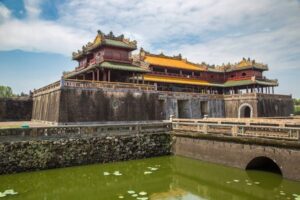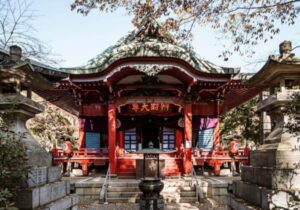The Travel Blog

Pangkor Island, Malaysia: Fishing Villages and Tranquil Beaches
A Peaceful Pause from the World
Picture this: gentle waves on the shore, vibrant sunsets in the sky, and the calming sounds of village life nearby. Welcome to Pangkor Island, Malaysia. It’s a hidden gem where time slows down. Here, culture whispers softly all around you.
Pangkor is far from the busy tourist spots of Kuala Lumpur and Penang. It has hidden island charm, cultural coastal towns, and untouched nature. This isn’t a place of high-rise hotels and fast-paced nightlife. You’ll discover relaxed fishing towns, thick tropical forests, and quiet beaches just for you.
In this post, we’ll explore Pangkor’s highlights. We’ll show you where to go, what to see, and how to meet locals. You’ll also find out why this island should be on your travel list.
Where Is Pangkor Island and Why Is It Special?
Pangkor Island lies off the west coast of Peninsular Malaysia in the state of Perak. It’s accessible, yet relatively untouched by the usual flow of international tourism. That’s part of its appeal.
Key Highlights:
- Fishing heritage: Still home to working villages and dried seafood businesses.
- Cultural richness: Malay, Chinese, and Indian influences shape the local way of life.
- Nature escapes: Beaches, mangroves, and rainforests with rich biodiversity.
- Ease of access: A short ferry ride from Lumut makes it convenient for travellers.
If you’re chasing serenity over luxury, Pangkor delivers with authenticity and heart.
Must-Visit Fishing Villages

1. Sungai Pinang Kecil (SPK)
This village is a living postcard of Pangkor’s traditional fishing lifestyle. You’ll find colourful boats, wooden jetties, and unhurried life here. It’s also a great place to buy dried anchovies (ikan bilis), a local delicacy.
What to do:
- Walk along the jetties at sunrise.
- Chat with fishermen about their day’s catch.
- Visit local temples nestled within the village.
2. Sungai Pinang Besar
Less touristy and more industrial, this area is where much of Pangkor’s seafood trade happens. You’ll see smokehouses making dried squid and fish. These are great gifts or snacks.
The best way to explore these villages is to rent a motorbike or bicycle. This choice lets you roam freely and find hidden alleys.
Want to explore more peaceful Asian coastlines? Check out Khao Sok, Thailand: Limestone Cliffs and Lake Safaris for another tranquil escape into nature.
Tranquil Beaches to Explore
Pangkor’s beaches may not be world-famous, but they’re beloved by those who visit. They’re clean, quiet, and offer real moments of calm.
1. Teluk Nipah
Soft sand, clear water, and coral reefs nearby make this beach a favourite. You can go snorkelling or hop on a kayak and paddle around the nearby islets.
2. Coral Beach

Often touted as the most beautiful beach on Pangkor. It’s ideal for swimming and relaxing under shady trees.
3. Pasir Bogak
Popular with locals, this beach is great for families and has several eateries nearby.
Wildlife alert: Keep your eyes peeled for hornbills flying overhead, especially around dusk.
Cultural and Historical Attractions
Fu Lin Kong Temple
A serene Chinese temple set against a hill, featuring a mini Great Wall of China. It’s colourful, peaceful, and offers photo-worthy views.
Dutch Fort (Kota Belanda)
This small fort is a reminder of the Dutch occupation in the 17th century. It’s a relic of colonial history. It has a small museum area and storyboards in English and Malay.
Kaliamman Temple
A vibrant Hindu temple that showcases Pangkor’s multicultural essence. Visit during festival times for a true cultural immersion.
What to Eat on Pangkor Island
Eating here is an experience in itself. The food is simple, fresh, and flavour-packed.
Must-Try Dishes:
- Ikan Bakar (grilled fish) by the beach
- Mee Udang (prawn noodles)
- Satay skewers from local night markets
- Dried seafood snacks like anchovies and squid
For dessert, try local coconut ice cream or fresh mango shakes served on roadside stalls.
How to Get There
From Kuala Lumpur:
- Drive to Lumut (approx. 3.5 hrs)
- Take a ferry from Lumut to Pangkor (30–40 mins)
From Penang:
- Drive to Lumut (approx. 2.5 hrs)
Tips:
- Ferries run regularly and are inexpensive.
- You can rent a scooter on the island for RM 30–40/day.
When to Visit Pangkor Island
- Dry season : January to March (best weather)
- Shoulder season : April to June, September to November (less crowded)
- Avoid : Peak holiday weeks in December when domestic tourism spikes
Hidden Trails and Forest Walks
Pangkor is famous for its coastline. But its interior has quiet spots of lush greenery ready for exploration. If you want to leave the beach and explore nature, the island’s short forest trails are great for a quick adventure.
Bukit Pangkor Trail
This easy hike leads you through secondary rainforest. You’ll reach a hilltop viewpoint over Teluk Dalam. Along the way, you might spot:
- Macaques and monitor lizards
- Colourful butterflies and bird species
- Traditional village homes tucked beneath the trees
Go early in the morning or late afternoon for cooler temperatures and better wildlife sightings. Wear decent walking shoes and bring water — there are no stalls along the route.
Hornbill Spotting in the Wild
Hornbills often glide through Pangkor’s villages and hotel gardens at dusk. Birdwatchers looking for more can explore the wooded areas for a better chance. Watch for the Oriental Pied Hornbill. It has a large bill and unique black-and-white markings that make it easy to spot.
For a laid-back nature walk, take the coastal paths that connect beaches like Pasir Bogak and Coral Beach. The shaded walkways wind through coconut groves. You can catch occasional views of the sea peeking through the trees.
Responsible Travel Tips
Help keep Pangkor as peaceful and beautiful as it is:
- Avoid single-use plastics
- Support local businesses and guides
- Dress modestly when visiting temples
- Don’t disturb local wildlife, especially hornbills
Conclusion: Pangkor Is Where You Go to Breathe
If your heart yearns for hidden islands in Asia that offer serenity, culture, and sincerity, Pangkor Island, Malaysia, is your answer. It’s a destination that reminds you to slow down, breathe deeply, and appreciate the quiet moments.
Pangkor offers unique moments. You can sip kopi in a fishing village or see hornbills flying against an orange sky. These experiences aren’t in the usual guidebooks.
Ready to discover Pangkor?
Plan your visit, share this post, or leave a comment below with your favourite tranquil escape. Let’s keep celebrating the beautiful corners of our world, one quiet beach at a time.
Loved the cultural vibe of Pangkor. Dive deeper into cultural heritage by exploring Isaan, Thailand: A Blend of Khmer and Lao Heritage — another overlooked gem.









